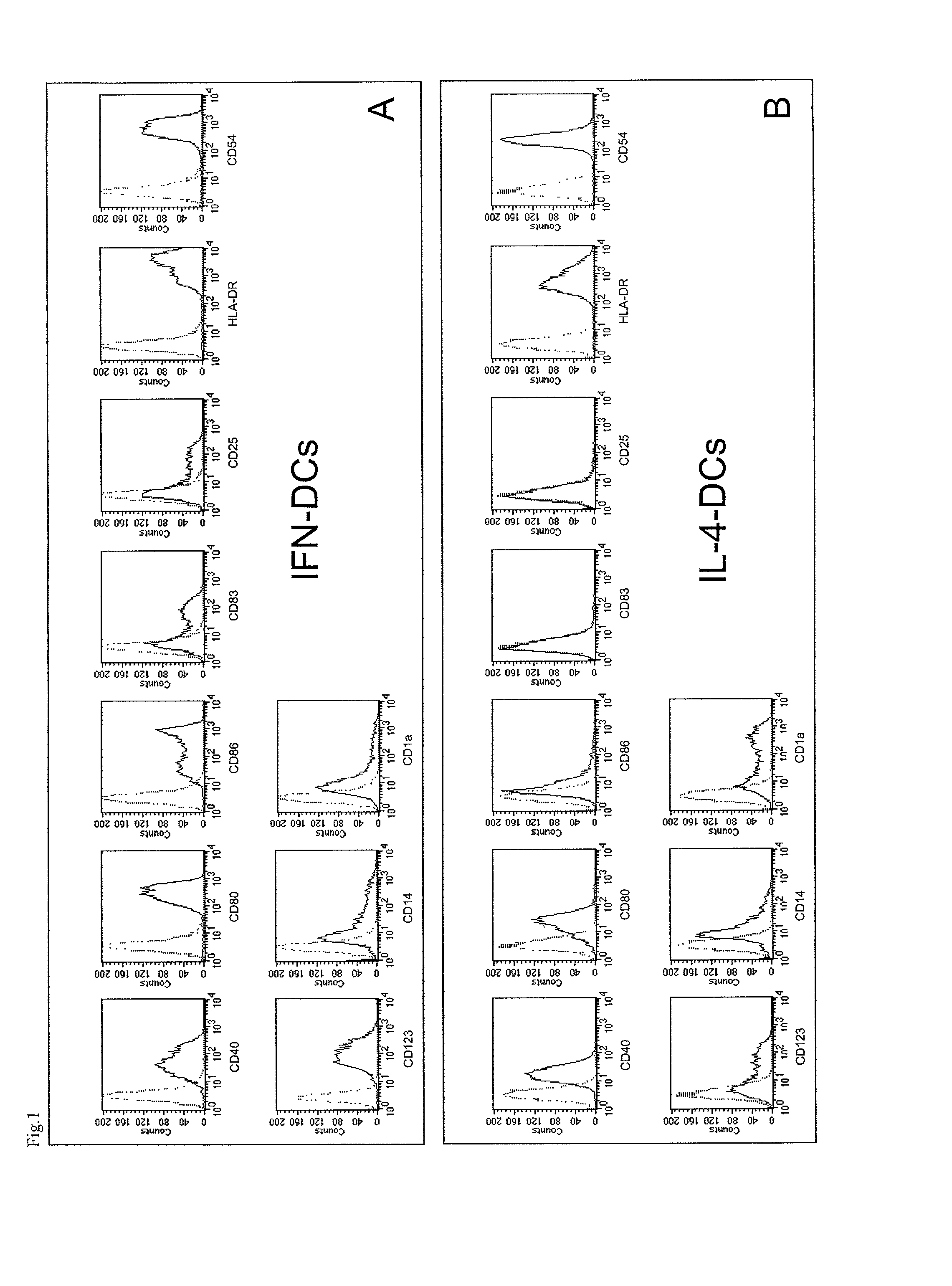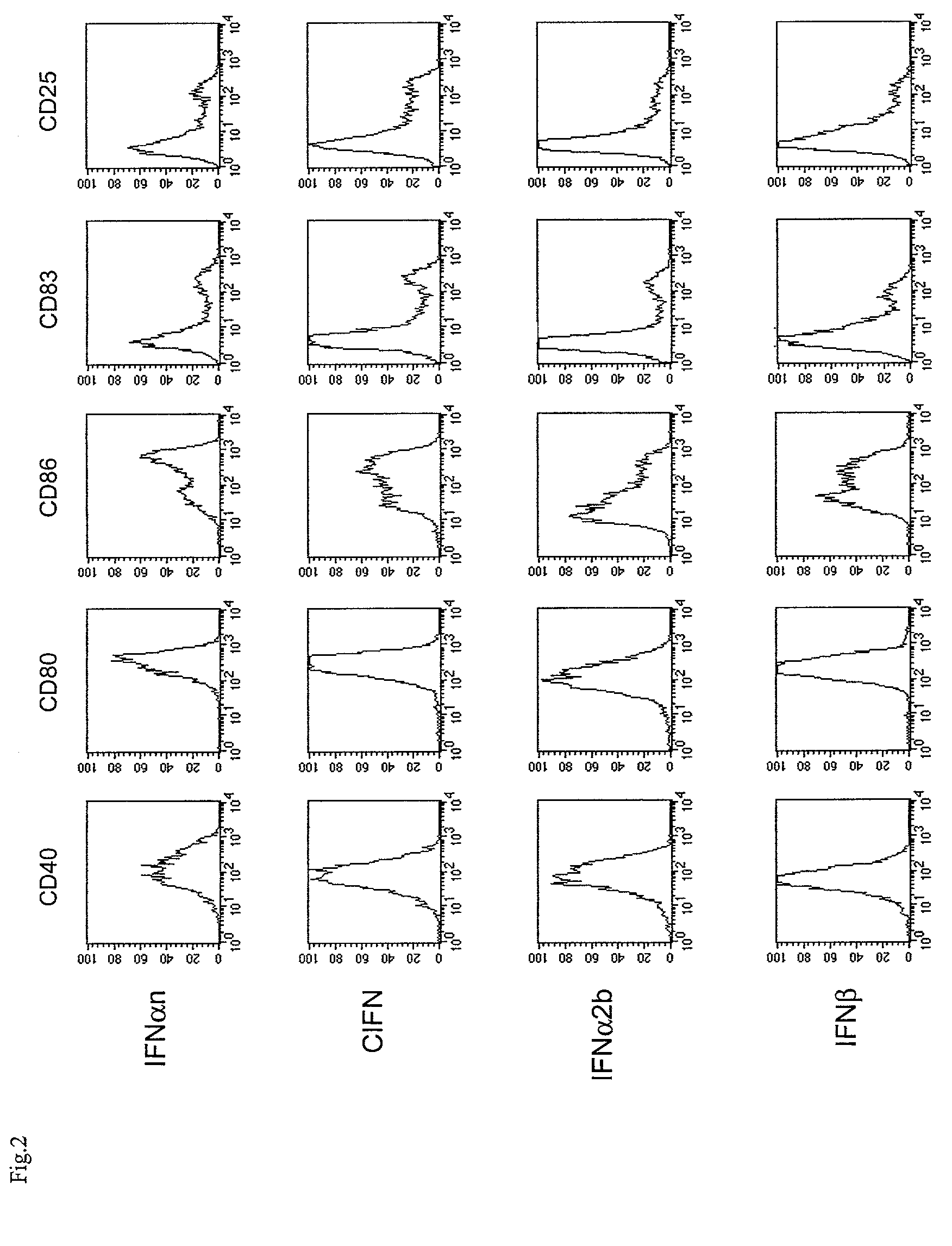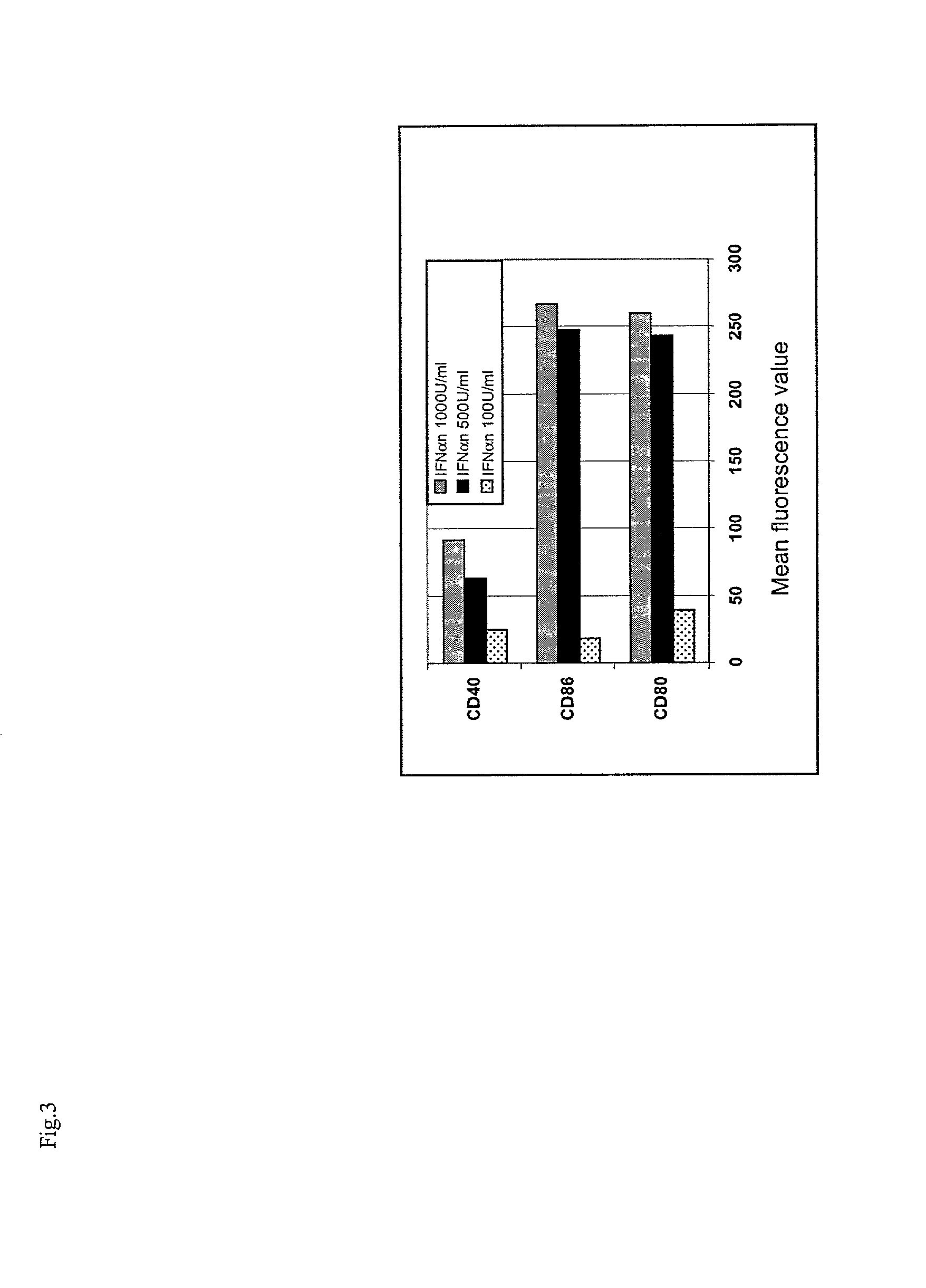Method for generating highly active human dendritic cells from peripheral blood mononuclear cells
a technology of peripheral blood mononuclear cells and human dendritic cells, which is applied in the field of immunotherapy, can solve the problems of low frequency, complicated and expensive obtaining dcs, and limited use of dcs
- Summary
- Abstract
- Description
- Claims
- Application Information
AI Technical Summary
Benefits of technology
Problems solved by technology
Method used
Image
Examples
example 1
Derivation of DCs From Monocytes and Characterization of Immunophenotype and Morphology thereof
[0109]Derivation of DCs From Monocytes
[0110]Peripheral blood mononuclear cells were obtained from heparinized blood of normal donors by Ficoll density gradient centrifugation (Seromed). Monocytes were obtained either by 2 hr adhesion in 25-75 cm2 flasks (Costar, Cambridge, Mass.) or by standard Percoll density gradient centrifugation.
[0111]Monocytes were further enriched by depleting contaminating cells using negative immunoselection by microbeads conjugated to a monoclonal anti-hapten antibody directed to a cocktail of hapten-conjugated CD3, CD7, CD19, CD45RA and CD56 antibodies (MACS Cell Isolation Kits, Miltenyi Biotec, Germany). After these procedures, the resulting cell population was represented by >95% CD14+ monocytes, as assessed by flow cytometry.
[0112]Blood derived monocytes were plated at the concentration of 1-2×106 cells / ml in RPMI 1640 (Gibco BRL, Gaithesburg, Md.) supplement...
example 2
Production of Cytokines by IFN-DCs and IL4-DCs
[0131]DCs produce a series of cytokines implicated in the initiation of the immune response especially when activated by mutual interaction with T cells or by encounter with viral pathogens and bacterial products. Thus, it was of interest to evaluate whether IFN / GM-CSF treated DCs exhibited any specific pattern of cytokine expression as compared to cells cultured in the presence of IL-4 / GM-CSF. To this end a comparative RT-PCR analysis has been carried out.
[0132]Total RNA from DCs was extracted by RNAzol B and processed as previously described (24).
[0133]Transcripts were detected by amplifying the retro-transcribed RNA with specific primer pairs for:
[0134]
IL-1sense CTTCATCTTTGAAGAAGAACCTATCTTCTT,antisense AATTTTTGGGATCTACACTCTCCAGCTGTA),TNFαsense ATGAGCACTGAAAGCATGATCCGG,antisense GCAATGATCCCAAAGTAGACCTGCCC),IL-12 p40(sense CCAAGAACTTGCAGCTGAAGA,antisense TGGGTCTATTCCGTTGTGTC),IL-15(sense CTCGTCTAGAGCCAACTGGGTGAATGTAATAAG,antisense TACTT...
example 4
Allopeneic Stimulatory Capacity of IFN-DCs
Enhanced Allostimulatory Properties of DCs Generated in the Presence of IFN / GM-CSF.
[0137]A series of functional experiments has been carried out for comparing the ability of DCs generated from monocytes in the presence of IFN / GM-CSF or IL-4 / GM-CSF to stimulate proliferation and IFNγ production by allogeneic PBLs in MLR assays.
[0138]Monocyte-depleted PBLs were seeded into 96 wells plates (Costar, Cambridge, Mass.) at 105 cells / well. Purified allogeneic DCs (5×103) were added to each well in triplicate. After 5 days, 1 μCi of methyl-3H-Thymidine (Amersham) was added to each well and incubation was continued for additional 18 hr. Cells were finally collected by a Mach II Mcell (Tomtec) harvester and thymidine uptake was quantitated by liquid scintillation counting on 1205 Betaplate (Pharmacia).
[0139]As illustrated in FIG. 6A, wherein are reported the results of the comparative MLR assays in the presence of various preparations of type I IFN and...
PUM
| Property | Measurement | Unit |
|---|---|---|
| Time | aaaaa | aaaaa |
| Fraction | aaaaa | aaaaa |
| Time | aaaaa | aaaaa |
Abstract
Description
Claims
Application Information
 Login to View More
Login to View More - R&D
- Intellectual Property
- Life Sciences
- Materials
- Tech Scout
- Unparalleled Data Quality
- Higher Quality Content
- 60% Fewer Hallucinations
Browse by: Latest US Patents, China's latest patents, Technical Efficacy Thesaurus, Application Domain, Technology Topic, Popular Technical Reports.
© 2025 PatSnap. All rights reserved.Legal|Privacy policy|Modern Slavery Act Transparency Statement|Sitemap|About US| Contact US: help@patsnap.com



